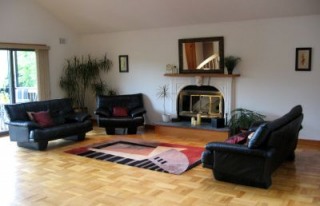
020 8531 5656
info@breway.com
How to Arrange Furniture in a Room
There are several things to keep in mind when thinking through the arrangement of furniture in a room. Remember, we’re doing this on paper; therefore, you may draw several different versions of the same room in order to get what you like for now. Once the furniture is actually in the room, you may move things around, but this is a good way to start thinking about what you’ll need.Focal Point: You want to find a focal point such as a fireplace or architectural detail around which to make an arrangement of furniture. If a room doesn’t have a focal point, you can create one with a great piece of fur¬niture or artwork. The focal point is what draws you into the room.
Anchor: Place the largest piece in position first. It becomes your anchor. For example, in a living room it would be the sofa. In a family room it might be an interesting armoire or bookcase.
Balance: Arrange other pieces in relation to the main piece. Be aware of sizes and how they relate to each other. Then look at your grouping in relation to everything else in the room, and the size of the room itself. Vary the elements by using high and low, heavy and light pieces together.
Balance also relates to colors and patterns. For example, two chairs will balance a sofa. They can be placed at either end of a coffee table, next to the sofa or together, with a small table between, facing the sofa.
Traffic Flow: When you’ve arranged your furniture on paper, imagine how people will walk into and through the rooms. Do you like the flow pattern? If not, you can redirect the activities by shifting a chair, or making two separate conversation areas, for example. Look at the arrangements you’ve created and try to imagine being in the room, under different circumstances, by yourself, with someone else, with your family and with vari¬ous other people you might entertain.
Sometimes an arrangement of furniture doesn’t work for all situations. In my living room, for example, I have a few pieces that are light and can be moved around. I rearrange when I have to accommodate more than six people. You might want to consider a flexible arrangement for your way of living.
Variations on the Norm: There is no law written in stone that says you have to have a sofa in a living room. Two love seats opposite each other is my preference. You might have four comfortable chairs arranged around a low table, or a love seat opposite two chairs. Of course, the most common arrangement is a sofa against the longest wall, a coffee table in front of it and an easy chair at either end of the table. This is the most common because it works well for conversation. You can pull up two more chairs easily, and people can get up and walk around without disturbing each other.
When arranging furniture in a bedroom, draw the bed in different positions. Usually there aren’t many options for placing the bed, because of wall space. However, keep in mind that a bed can be placed across a corner of a room or under a window (although many people do not find this acceptable). Before actually putting the bed in position in the room, lie down on the floor where your bed will be to see how it feels. Once the carpeting was laid in our bedroom, and before a stick of furniture was brought in, we did just this, and it was immediately apparent that the bed would be facing the wrong way. We both felt more comfortable with the bed on the opposite wall where we had a much better view out the windows. According to the Eastern philosophy of interior design, the placement of bedroom furniture is crucial to your well-being.
Rules of Thumb: You’ll need a lane of about 3 feet for walking through a room without bumping into furniture. You’ll need 3 feet to open drawers, and 2 feet on each side of a bed. Place the coffee table between 1 and 2 feet from the sofa. You should have between 2 and 3 feet for pulling dining chairs away from the table. If you want to place a china cabinet or sideboard in a dining room, you should have 3 to 4 feet for passing behind the chairs when people are seated at the table.
This article was written by admin

1 comment:
With our industry the path it truly, I am chioosng to make methods for filing for having been fired health advantages. My thing ended up identify exactly how being out of work technique features, what the habitual is good for recognizing or sometimes rejecting advises, and then include content articles produced by the go through with what among the better tactics in addition , commonly used discrepancies have been in declaring bankruptcy under being out of work importance.